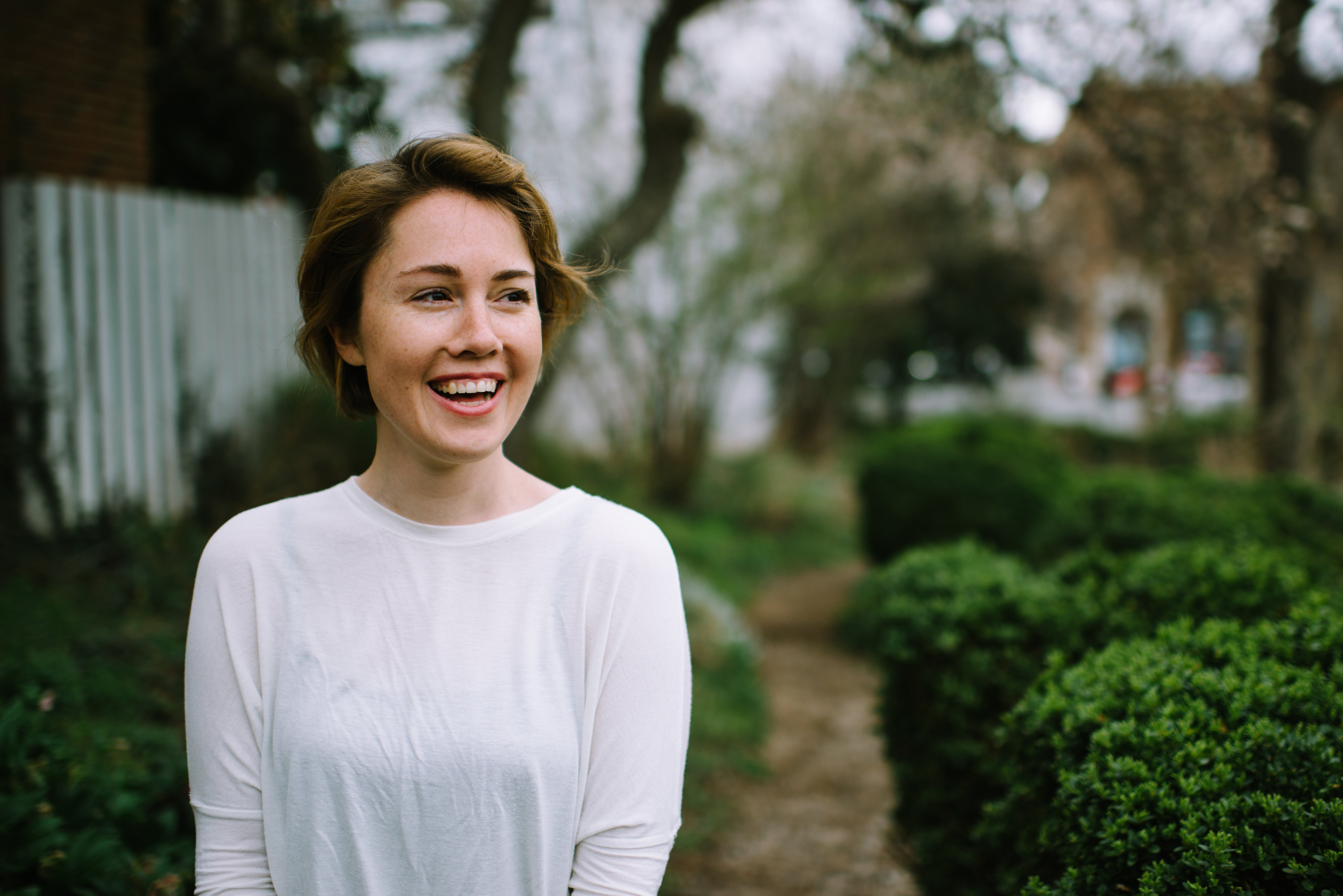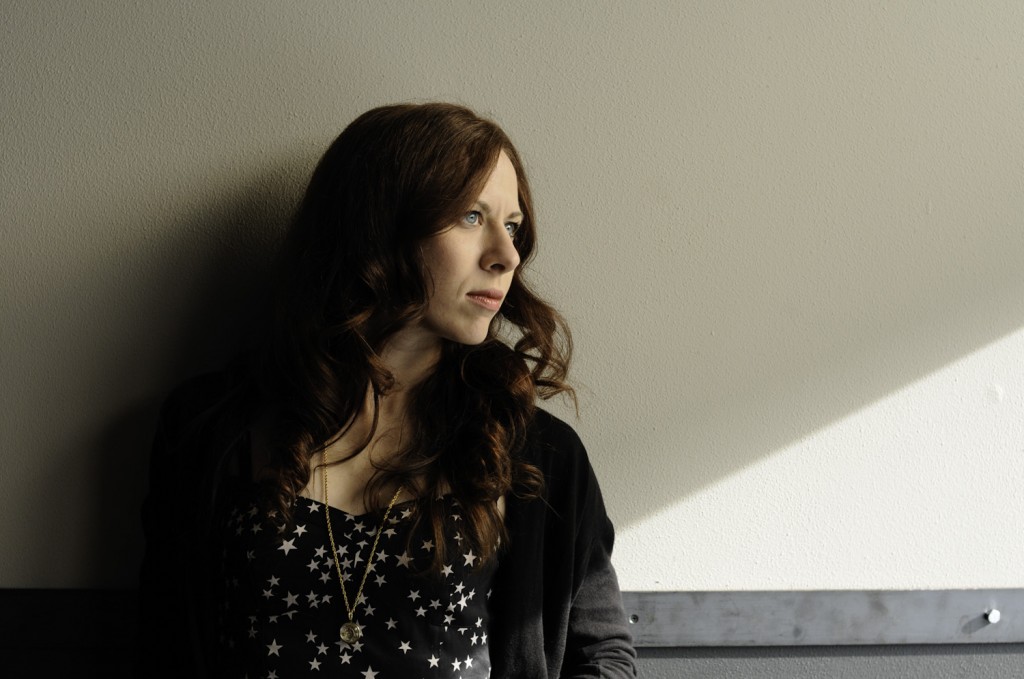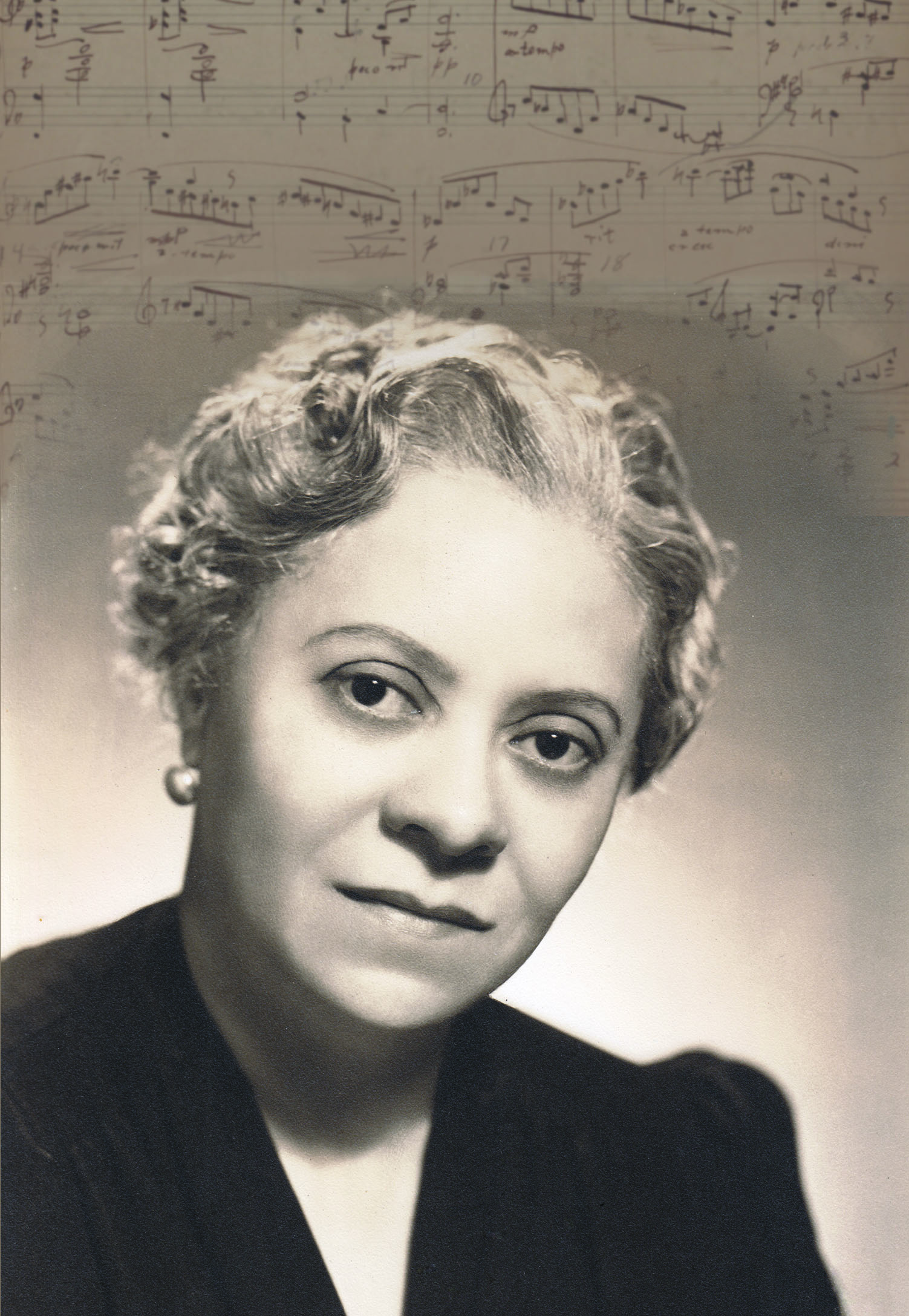
(Photo: Kait Moreno)
One recent morning in an ornate concert hall in Santa Barbara, California, a casually dressed symphony orchestra was rehearsing a disarmingly quirky, warmly romantic violin concerto. All eyes were on Caroline Shaw, and not just because the 36-year-old North Carolina native was the soloist. The piece was the product of her remarkable imagination.
“Caroline, is this more or less the effect you wanted?” conductor Larry Rachleff asked her after the strings played a briskly paced passage. “Yes, but they can be more irregular,” she replied. “Feel like you’re surprising yourself.”
America’s orchestras will offer audiences plenty of pleasant surprises over the next nine months, thanks to the increasing visibility of a group of previously underappreciated artists such as Shaw. This is, arguably, the season of the female composer.
In the wake of the #MeToo movement, and a growing consensus that the creators of the 21st century’s cultural artifacts cannot exclusively be white males, some of America’s most prominent ensembles are programming more works by women than ever before. Tradition-minded symphony-goers may be jolted to find Beethoven or Brahms sharing a bill with Amy Beach.
Perhaps just as importantly, orchestras that haven’t joined the trend have been somewhat startled by the blowback they have received, on both traditional and social media. Even as Shaw’s rehearsal resumed, complaints were mounting on the Internet that the Philadelphia Orchestra‘s 2018–19 season didn’t contain a single work written by a woman.
“We had not noticed that,” says a sheepish Jeremy Rothman, the orchestra’s vice president for artistic planning. “A lot of people looked at our season, including our music director; a committee of musicians, many of whom are female; and our president and CEO, who is a woman. This was an unforced error.”
Hoping to remedy the situation, the City of Brotherly Love’s esteemed ensemble eventually added two pieces by female composers to its 2018–19 repertoire—and promised more for future seasons. While two can be viewed as tokenism, the fact the staff felt obliged to act suggests this season may mark a genuine shift in attitude, in Philly and well beyond.
“We’re doing more and more commissioning of female composers,” says Elena Dubinets, vice president of artistic planning and creative projects for the Seattle Symphony, which co-commissioned Shaw’s Piano Concerto and will premiere it this coming February, with Jonathan Biss as soloist. “Our society is much more inclusive these days. We need to reflect that.”

It is certainly reflected in the programming of the Los Angeles Philharmonic, which will open its season September 27th with the world premiere of Underneath the Sheen by American composer Julia Adolphe. She is one of 18 women who have been commissioned to write works for the orchestra’s centennial season, along with 37 men.
“There have historically been two areas that are fundamental to the life of an orchestra where there hasn’t been gender equity: Who stands on the podium, and what music do you play?” says Chad Smith, chief operating officer of the Los Angeles Philharmonic. “That’s something we’ve been aware of, and we have been consciously trying to address over time. The 2018–19 season is an extension of that ongoing work.”
Most of those commissioned pieces will be performed on programs devoted to new music, or the music of California. The orchestra’s bread-and-butter subscription series—sets of four or more concerts purchased as a package—remain much more male-dominated: They will feature music by 52 composers, six of whom are women.
But that ratio represents major progress, particularly since it’s being approximated in much of the nation. The Detroit Symphony, Seattle Symphony, and Minnesota Orchestra are each presenting works by five women on their main subscription series this coming season. The North Carolina Symphony, another co-commissioner of Shaw’s concerto, boasts that two-thirds of the living composers programmed on its 14-concert “classical series” are women.
But this shift certainly hasn’t been universal. Several major American orchestras have been caught B-flat-footed, including the aforementioned Philadelphia Orchestra; the Cleveland Orchestra (which is playing a single piece composed by a woman); and the renowned Chicago Symphony. It has no works by women on its subscription series this year, but Missy Mazzolli, creator of the acclaimed opera Breaking the Waves, will be its new composer-in-residence.

(Photo: Stephen S. Taylor)
To Shaw, playing few if any works by women is a sign a symphony largely avoids new music. “I understand why it’s hard for them to (program contemporary works),” she says after her rehearsal with the Festival Orchestra of Santa Barbara’s Music Academy of the West. “It involves convincing their audience that hearing new music isn’t like eating your vegetables—it’s really fun!”
That message has been effectively conveyed in Los Angeles, thanks to an ongoing effort by the Philharmonic that dates back more than a decade. “We have normalized the new,” says the orchestra’s Smith. Whether an unfamiliar name is male or female, “Our audience is OK with a little uncertainty about what’s coming.”
Philadelphia Orchestra subscribers may not be that adventurous, but orchestra officials are not using that as an excuse for inertia. “[Composer] Jennifer Higdon is based here in Philadelphia,” Rothman notes. “We’ve commissioned a half-dozen pieces from her. Philadelphia audiences have come to know and trust her music. That’s one way to do it, but it takes time.
“Symphony orchestras depend on a standard repertoire of pieces from the 18th, 19th, and early 20th centuries,” he adds. “It’s much like the core collection of an art museum. As creative voices, women are underrepresented in those historical eras. So we have to present more music of the last 50 years, and more music of today.”
While that’s undoubtedly true, Brandeis University musicologist Liane Curtis argues there are many female composers of past generations whose work has not gotten the play it deserves. “People mistakenly think the playing ground was level in the past,” she says. “If there were good women composers, we would have heard of them, and the fact we haven’t heard of them means they aren’t very good. It’s very circular reasoning.”

Readers of The New Yorker and the New York Times have lately been exposed to one such genius. Florence Price (1887–1953), an African-American woman, had been largely forgotten despite enjoying considerable success in her day. (Her First Symphony was premiered by the Chicago Symphony in 1933.) Feature stories in both publications clearly raised her profile: This coming season, the North Carolina Symphony will perform her Piano Concerto, and the Minnesota Orchestra will play her Third Symphony.

(Photo: Wikimedia Commons)
But among underappreciated American women, Amy Beach is exhibit A. Her 1894 Gaelic Symphony was modeled after Dvorak’s beloved New World Symphony, and is arguably just as exciting and accessible. In April, the Minnesota Orchestra will give a rare performance, under conductor Sarah Hicks.
That pairing raises a point. Although the number of female music directors of major American orchestras remains stuck at one (Marin Alsop, in Baltimore), the new generation of rising podium stars has quite a few women, and many are appearing as guest conductors with these prominent ensembles.
Are female conductors more likely to advocate for women composers? “I suspect the answer is yes,” says the L.A. Phil’s Smith. But Curtis, the president of Women’s Philharmonic Advocacy, isn’t so sure. “They might not want to (push too hard in that direction),” she says. “They don’t want to be pigeonholed.”
All in all, Curtis is hesitant to call this a turning point. “There was a lot of interest in women composers in the 1990s, but it passed,” she says. But orchestras plan their seasons years in advance, and the artistic administrators interviewed all indicated they are continuing to think in these terms as they contemplate the next decade.
In July, the Dallas Symphony announced a multifaceted “Women in Classical Music” initiative, including a plan to commission 20 new works over the next 10 years—at least half of which will be by women. (The program also includes appointment of a female principal guest conductor, and a symposium next year.)
Rothman notes that 2020 (besides being Beethoven’s 250th birthday) will mark the centennial of women’s suffrage in the United States. He says there is already discussion about honoring that history in Philadelphia, and the orchestra will be a part of that celebration, performing a major commission from California-born composer Gabriela Lena Frank.
If other orchestras pick up on that anniversary, the momentum generated this coming season can continue to build. But the Seattle Symphony’s Elena Dubinets points to a deeper issue that may be getting in the way of women composers achieving full equality.
She argues that, in the minds of many people (including some musicians), male composers express universal ideas and feelings, while their female counterparts are restricted to thoughts and emotions that are unique to their gender.
“The masculine has been firmly associated with the idea of transcendence,” Dubinets says, “while the feminine is seen as limited. In fact, women can be just as expressive as men.” Until that is understood, she argues, women will remain at a disadvantage.
“People assume only white men can come up with brilliant ideas,” she says. “I’m not only talking about music.”





